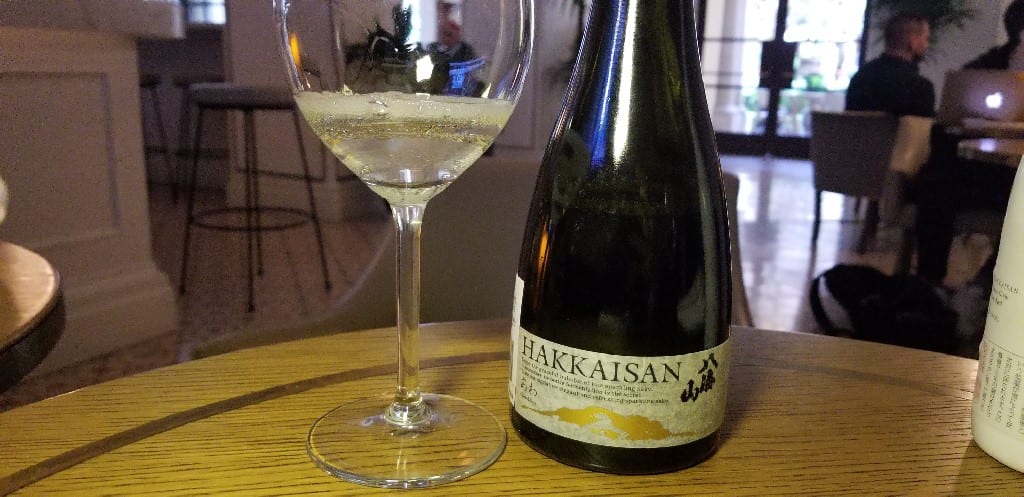
06 Jun Move over sparkling wine and make room for sparkling sake!
Sparkling sake? I am not talking about the cheap stuff you may have seen in the market. I am talking about sparkling sake made like Champagne, with secondary fermentation in the bottle. I was surprised and quite impressed when I tried it and wrote about it in the Napa Valley Register and am sharing here.
When you think about sparkling wines that are not Champagne, you might think about sparkling wine from California, Oregon, France, Italy, Spain or another wine- producing region. But what about Japan? When you think about what grapes sparkling wines are made from, you might think about Chardonnay, Pinot Noir, Pinto Meunier, Glera, Vermentino, Shiraz, Lambrusco or many other wine grapes. But what about sake?
Sparkling sake is a new concept. With the pending 2020 Olympics coming to Japan, sake producers began to think about what the dignitaries would toast with at the opening ceremonies.
Traditional Champagne or sparkling wine was likely but was there something from Japan that could be used? This is what inspired nine brewers to form the Japan Awasake Association, committed to raising the quality of sparkling sake. The “Awa” in “awasake” means “foam” or “bubbles” and the idea of the association is to produce super-premium sparkling sake, something that might be able to compete with the sparkling wines of the world.
One of the first to export this premium sparkling sake is Hakkaisan Sake Brewery, located at the foot of the Hakkaisan Mountain in Niigata. Named after Mount Hakkai, which means eight peaks, Hakkaisan was founded in 1922 and as they approach their 100th anniversary, they are owned by the same family with the third-generation of the family as president today.
I tasted the sparkling sake with Hakkaisan brand ambassador Timothy Sullivan, a Sake Samuri, sake educator with the Sake School of America and owner of UrbanSake.com.
Sullivan worked in corporate America in New York until one night in 2005, over a sushi dinner, he tried cold premium sake, specifically the Hakkaisan Junmai Ginjo, and became an over-night super fan. He started a blog and in 2007 was named a Sake Samurai by the Japan Sake Brewer’s Association.
At Hakkaisan, all of the koji, the molded rice at the heart of sake, is hand-made. A labor-intensive project, the rice is put in a small, hot room where the mold propagates on the surface. This rice is put in the mash and the molded rice gives off an enzyme that breaks down the starch to sugar, which is then converted to alcohol.
Based in Niigata, part of the Japanese alps, the brewery is located in a mountainous and snowy area. They use local water, spring water from melted snow. This soft, pure water has no minerals, resulting in a lighter fermentation and a crisper, cleaner style of sake. Lastly, all of the sake at Hakkaisan is brewed in small batches so that everything can be maintained and stirred by hand.
To make the Hakkaisan AWA Clear Sparkling Sake, they start with making premium still sake. The sake is put in the bottle with a small amount of mash and sealed. Secondary fermentation takes place over two months and, like Champagne, riddling takes place. The sake is then disgorged and topped off with the sake from the same batch. No sugar is added.
The Hakkaisan AWA Clear Sparkling Sake is a pale lemon color, and on the nose has notes of lemon, pineapple, apple and other tropical fruits. The sake has citrus notes on the front of the palate and pear notes on the finish. The sparkling sake is 15 percent abv and the acidity is 1.6, less than wine. It is refreshing and delicate and pairs beautifully with oysters and other shellfish.
Hakkaisan Sake Brewery is the first brewery to export premium sparkling sake to the United States. Do not mistake this for the low-alcohol brews made by adding carbon dioxide that are currently in the market. Hakkaisan AWA Clear Sparkling Sake is made in the traditional method, with secondary fermentation in the bottle, and is elegant and intriguing. And, it is available in time for the 2020 Olympics in Japan! Kanpai!
Read the original article in the Napa Valley Register.
Discover more from Please The Palate
Subscribe to get the latest posts sent to your email.




